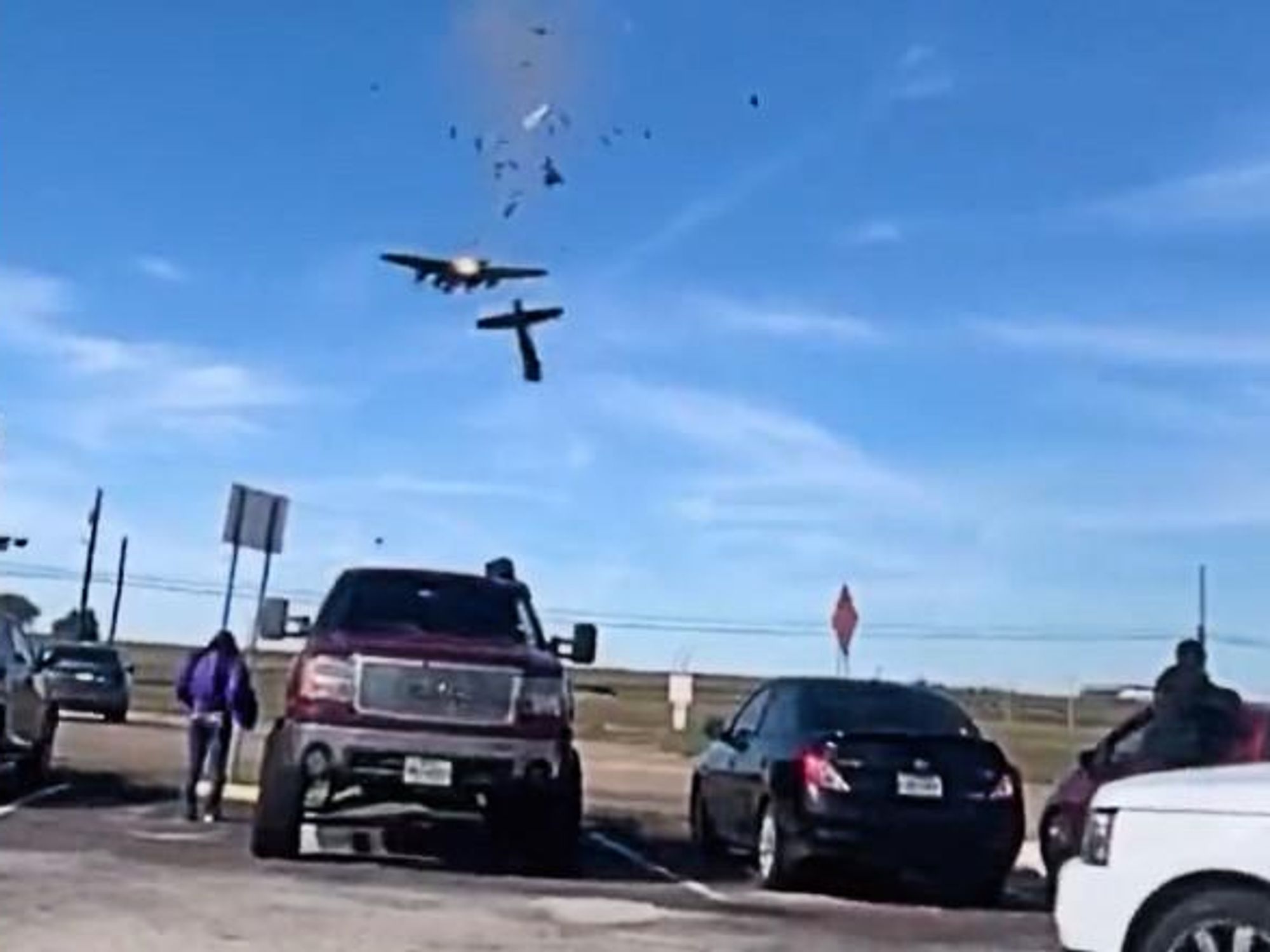Airplane News
6 people die in crash at military airshow at Dallas Executive Airport

One plane hit another at the Wings Over Dallas Airshow at Dallas Executive Airport.
Six people died in an airplane crash at the Wings Over Dallas Airshow at Dallas Executive Airport in south Dallas on November 12.
Described as a chance to "re-live history," the show featured vintage World War II planes in air. The crash made national news and was photographed and recorded by a number of spectators.
The two planes that crashed were a Boeing B-17 Flying Fortress, and a small Bell P-63 Kingcobra. According to Airlive.net, the P-63 took a wide turn which would have prevented its pilot from seeing the B-17.
Both planes were owned by the Commemorative Air Force (CAF) and based in Houston. According to CNN, hundreds of spectators watched as the planes collided, then burst into a fireball on the grounds of Dallas Executive Airport.
CAF president Hank Coates said that the pilots at CAF airshows are volunteers, many airline pilots, retired airline pilots, or retired military pilots, and said the aircraft were safe and well-maintained.
Two of the victims were from Keller: Len Root, who worked as a contract commercial pilot; andand Terry Barker, an Army veteran and pilot for American Airlines for 36 years.
Barker was also a former city council member for Keller, according to Keller Mayor Armin Mizani, who said on Twitter that "I was fortunate to have him as a friend, and his guidance when it came to what was best for our residents never steered me wrong."
Other casualties included Major Curtis Rowe, a veteran pilot, who volunteered to be a crew member on the B-17, and according to Fox 4, Houston-based pilot Craig Hutain, who was flying the P-63 Kingcobra. Hutain flew for United Airlines and was planning on retiring in a few years.
Kevin “K5” Michels and Dan Ragan were the other two men who died.
The NTSB will issue a preliminary report in four to six weeks, although spokesman Michael Graham said a full investigation could take more than a year. They're urging anyone with video or pictures to send them to witness@ntsb.gov.
“They’ll actually be very critical since we don’t have any flight data recorder data or cockpit voice recorders or anything like that,” Graham said. “They’ll be very critical to analyze the collision and also tie that in with the aircraft control recordings to determine why the two aircraft collided and to determine, basically, the how and why this accident happened and then eventually, hopefully, maybe make some safety recommendations to prevent it from happening in the future."

 David and Melissa Loder's Elf Town is on Penbrook Court in the Deerfield subdivision of Plano. Photo courtesy of David and Melissa Loder
David and Melissa Loder's Elf Town is on Penbrook Court in the Deerfield subdivision of Plano. Photo courtesy of David and Melissa Loder